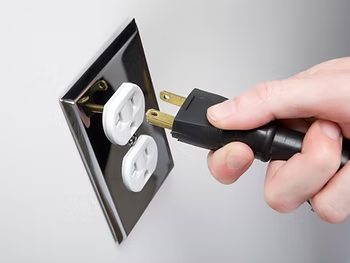Disposing of Old Electronics
- Smart Choices
- Aug 22, 2022
- 2 min read
WAIT! Before you give your outdated or dilapidated electronics the heave-ho, consider this earth-friendly advice from the Environmental Protection Agency (EPA).

Consider recycling Electronics are made from metals, plastics and glass that require energy and time to reproduce. For example, according to the EPA:
Recycling one million laptops saves the energy equivalent to the electricity used by more than 3,500 U.S. homes in a year.
For every million cell phones we recycle, 35,000 pounds of copper, 772 pounds of silver, 75 pounds of gold and 33 pounds of palladium can be recovered.
But before you donate or recycle … Can you upgrade the hardware or software on your current computer to extend its life? If the answer is no and you ultimately decide to get rid of a computer or other device, destroy all personal information from the device first. Also, remove any batteries from your electronics for separate recycling.
Where to donate or recycle Several manufacturers and local and national retailers offer donation or recycling options. The EPA’s Sustainable Materials Management (SMM) tracks and publicizes participants and major companies include Best Buy, Dell, Sprint, Sony and Vizio. SMM participants strive to send 100 percent of used electronics they collect to certified recyclers and refurbishers. For more information about recycling electronics, refer to EPA’s website and other reputable sources.
How to remove data There are various ways to permanently erase (or “sanitize”) data from your electronic devices prior to getting rid of them, and methods vary from device to device. According to the U.S. Department of Homeland Security, Earth 911 and other electronic recycling gurus, general guidelines include:
Back up data. Save your data to another device or second location (external hard drive or cloud).
Delete data. Although files appear to have been removed, data is still there, according to Homeland Security. Even if you empty the virtual trash, the deleted items can still be retrieved. Permanent data deletion requires several steps; spend some time researching how to effectively delete data for the device you are recycling. One source for additional instructions is Earth911.
Overwrite data. This is when you delete sensitive information and write new binary data over it. Unless you are a computer expert you might want to consult a professional.
Destroy the device. Take your stress out on your device. Physically destructing a device is the ultimate way to prevent someone else from retrieving your personal information. There are also companies that specialize in disintegrating, burning, melting or pulverizing your computer drive and other devices.
For more information on removing data, refer to details on Cybersecurity and Infrastructure Security Agency website.
Source: SafeElectricity.org




Comments